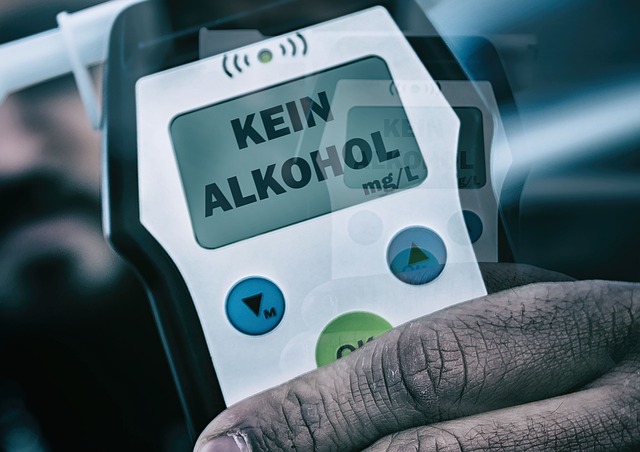Category: Vehicle Safety Features and DUI Law
Vehicle Safety Features and DUI Law: A Comprehensive Overview
Introduction
In the ever-evolving automotive industry, ensuring passenger safety while mitigating the devastating effects of drunk driving (DUI) has become a paramount focus. This complex interplay is exemplified by the integration of advanced vehicle safety features and stringent DUI laws worldwide. This article delves into the intricate relationship between these two elements, exploring their significance, global impact, technological innovations, regulatory frameworks, and future potential. By examining real-world examples and analyzing market trends, we aim to provide a holistic understanding of how vehicle safety features and DUI law are reshaping transportation and public safety.
Understanding Vehicle Safety Features and DUI Law
Definition: Vehicle Safety Features (VSF) encompass a suite of technological and design elements within motor vehicles designed to prevent accidents, mitigate harm in collisions, and protect occupants’ well-being. Conversely, DUI laws refer to legislation aimed at addressing the impact of alcohol or drug impairment on driving capabilities, primarily through legal penalties and safety initiatives.
Core Components:
-
Active Safety Systems: These include features like collision avoidance systems (e.g., automatic emergency braking), lane departure warning, adaptive cruise control, and electronic stability control. They proactively enhance driver awareness and vehicle handling to prevent accidents.
-
Passive Safety Features: Restraint systems such as airbags, seatbelts with pretensioners, and energy-absorbing crumple zones are classified as passive safety measures that protect occupants during a collision.
-
Advanced Driver Assistance Systems (ADAS): These integrate various sensors, cameras, and radar to provide drivers with real-time data, enhancing their situational awareness. Examples include surround view cameras, 360-degree parking assistance, and traffic sign recognition.
-
DUI Prevention Measures: These involve legal provisions, such as blood alcohol concentration (BAC) limits, license suspensions for DUI offenses, ignition interlock devices, and public awareness campaigns to deter impaired driving.
Historical Context: The concept of VSF gained prominence in the 1990s with the introduction of airbags and anti-lock braking systems (ABS). Over time, advancements like lane departure warnings, adaptive cruise control, and collision mitigation systems have become ubiquitous. Simultaneously, DUI laws have evolved from simple BAC limits to comprehensive strategies that include mandatory ignition interlocks and severe penalties for repeat offenders.
Global Impact and Trends
The implementation of VSF and DUI laws varies across regions, influenced by cultural, economic, and regulatory factors:
-
North America: The United States and Canada have been leaders in adopting advanced safety features, with strict federal motor vehicle safety standards (FMVSS) and National Highway Traffic Safety Administration (NHTSA) guidelines. DUI laws are well-established, featuring stringent BAC limits and robust enforcement.
-
Europe: The European Union’s New Car Assessment Program (Euro NCAP) sets rigorous safety standards, encouraging the adoption of advanced driver assistance systems (ADAS). Many European countries have implemented strict DUI legislation, including low BAC limits and mandatory ignition interlocks.
-
Asia Pacific: Countries like Japan and South Korea have led in autonomous vehicle technology, influencing global VSF development. China has taken a comprehensive approach to DUI prevention, with severe penalties and extensive public awareness campaigns.
-
Emerging Markets: The integration of VSF is gaining momentum in developing nations due to rising car ownership and government initiatives. However, DUI laws vary widely, with some regions lacking robust enforcement mechanisms.
Economic Considerations
The economic landscape surrounding VSF and DUI law is multifaceted:
-
Market Dynamics: The global market for automotive safety systems is projected to reach USD 172.6 billion by 2025, growing at a CAGR of 8.4% from 2020 to 2025 (Source: MarketWatch). This growth is driven by stringent safety regulations and increasing consumer demand for advanced features.
-
Investment Patterns: Major automotive manufacturers are investing heavily in research and development (R&D) for VSF, with Tesla, Waymo, and Volkswagen leading the charge in autonomous driving technologies. Additionally, technology companies like Google and Apple are expanding their focus on ADAS and vehicle safety software.
-
Economic Impact: Strict DUI laws contribute to road safety improvements, reducing accidents and associated costs. According to a study by the National Institute of Health (NIH), the cost of motor vehicle crashes in the United States reached $143 billion in 2017, with significant portions attributed to DUI-related incidents.
Technological Advancements
Technological breakthroughs are revolutionizing VSF and DUI prevention:
| Technology | Description | Impact | Future Potential |
|---|---|---|---|
| Autonomous Vehicles | Self-driving cars equipped with sensors, cameras, and AI for navigation without human input. | Reduces accident rates by eliminating human error; improves accessibility for the elderly and disabled. | Could transform transportation, reduce congestion, and enhance road safety significantly. |
| Advanced Sensor Fusion | Integrates data from various sensors like LiDAR, radar, and cameras to create a 360-degree perception of surroundings. | Enhances ADAS performance, allowing vehicles to make more accurate decisions in real time. | Enables sophisticated driver assistance systems, potentially leading to fully autonomous driving. |
| Machine Learning for DUI Detection | Uses AI algorithms to analyze driving patterns and predict DUI behavior, supporting proactive enforcement. | Improves accuracy of DUI identification; allows for targeted patrols and resources allocation. | Could lead to personalized safety measures and early intervention programs based on driver behavior analysis. |
| Biometric Authentication | Utilizes biometric data like fingerprints or facial recognition for vehicle access and ignition control. | Prevents unauthorized use of vehicles by impaired drivers; enhances overall vehicle security. | Integrates seamlessly with smart cities infrastructure, securing various transportation systems. |
Regulatory Frameworks and Enforcement
Regulatory bodies worldwide have implemented diverse strategies to combat DUI:
-
Legal Penalties: Most countries enforce severe penalties, including fines, license suspensions, and imprisonment for DUI offenses.
-
Ignition Interlock Devices (IIDs): Mandated in many regions, IIDs prevent vehicles from starting if the driver’s BAC exceeds legal limits.
-
Public Awareness Campaigns: Governments and non-profit organizations conduct campaigns to educate the public about the dangers of DUI, often targeting specific demographics.
-
Data Sharing and Technology Integration: Law enforcement agencies utilize advanced data analytics and technology to identify high-risk drivers and enhance DUI enforcement.
Future Prospects and Challenges
The future of VSF and DUI law holds immense potential:
Opportunities:
-
Autonomous Vehicles: The widespread adoption of self-driving cars could significantly reduce accidents caused by human error, including DUI-related incidents.
-
Smart City Integration: VSF and DUI laws can be integrated into smart city infrastructure, enabling real-time data sharing for enhanced safety management.
-
Personalized Safety Measures: Advanced AI algorithms can tailor safety features to individual driver behavior, providing customized protection.
Challenges:
-
Regulatory Harmonization: Achieving consistent global standards for VSF and DUI laws remains challenging due to varying cultural and legal systems.
-
Data Privacy Concerns: The collection and use of vehicle and driver data raise privacy issues, necessitating robust data security measures.
-
Technological Adoption Gaps: Ensuring equal access to advanced safety technologies, especially in emerging markets, is crucial for global road safety improvements.
Conclusion
The synergy between vehicle safety features and DUI laws represents a powerful alliance in the pursuit of safer roads worldwide. Technological advancements, stringent regulations, and growing public awareness are driving significant progress. As the automotive industry evolves, the integration of VSF and effective DUI prevention strategies will play a pivotal role in shaping the future of transportation, salvaging lives, and fostering global road safety.
Ensuring Safety: Vehicle Features & DUI Law for Ride-Sharing Drivers

Ride-sharing drivers prioritize passenger safety through advanced vehicle features like airbags, ABS…….
Second Chances: DUI Prevention Through Education & Safety

First-time DUI offenders benefit from understanding vehicle safety features like ABS, ESC, and ADAS…….
Tech Integrates: Future-Proofing Vehicle Safety & DUI Laws

In the digital era, the intersection of Vehicle Safety Features and DUI Law is transforming due to a…….
Vehicle Safety Features: Reducing DUI Through Public Service

Community service projects focusing on educating individuals about vehicle safety features like ADAS…….
Vehicle Safety Features and DUI Law: Global Perspectives Impaired Driving

Vehicle safety features, driven by tech advancements and global road safety concerns, include ADAS l…….
Vehicle Safety & DUI Law: Impoundment Release Guide

After a DUI arrest, understanding vehicle safety features and DUI law is crucial for navigating impo…….
Enhancing Safety: Vehicle Features & DUI Law for Drivers

Vehicle Safety Features like ABS, ESC, and airbags, combined with strict DUI law enforcement and fle…….
Online Privacy: Safeguarding Vehicle Safety and DUI Laws

In the digital age, Vehicle Safety Features like Advanced Driver Assistance Systems (ADAS) enhance d…….
Safe Alternative Transit: Protecting Travelers from DUI Risks

Advanced Driver Assistance Systems (ADAS), V2V communication, impact-absorbing design, alternative f…….
